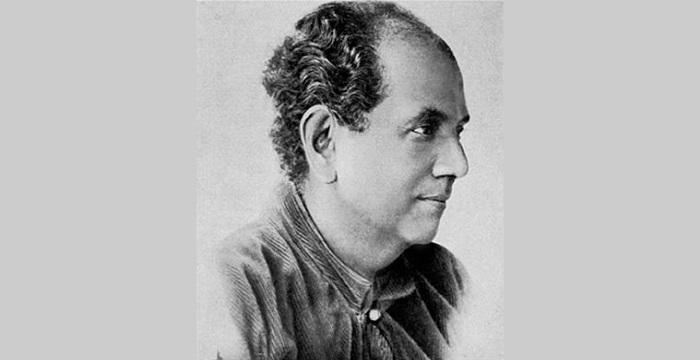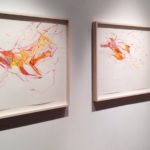No one can forget the contributions of Abanindranath Tagore in the art history. He was a principal artist. He was very genuine and down to earth. He is known as the creator of the “Indian Society of Oriental Art”. He has contributed a lot to Indian art culture. He introduced Swadeshi values in Indian art. He also founded the Bengal school of art. He was the first major exponent of art for India. It was the result of initiatives taken by him which led to the development of modern Indian painting. He never confined himself to painting only. He was a noted children writer. Rajkahini, Budo Angla, Nalak, and Khirer Putul etc are some of his literary works. But each one of them was originally written in the Bengali language. He beautifully created children’s literature in the Bengali language. People of his time called him ‘Aban Thakur’.
Once he was busy with his painting stuff. It was the time when he thought to modernize Mughal and Rajput styles. He wanted to improve Western models of art. He was not satisfied by the teachings of the British Raj. And there started the journey of amending Indian style of painting. He established Bengal school of art. He worked a lot for its success. It eventually got accepted and promoted as a national Indian style. The success of Tagore’s work was an inspiration for others. Tagore brought new landmarks to the Indian art culture.

Bharat Mata by Tagore
Tagore’s contribution to the development of modern Indian art will never be neglected. The Indian history will be grateful to him always. He played a crucial role at that time when no one even bothered about art and culture. It is momentous to study his contributions. But he was lucky to do so. It was because artistic sensibilities were added to him at a very young age. He spent his childhood in painting. He learned life-study in watercolor. He was born in 1871. He even went to English painter Charles Palmer to learn paintings. He learned oils and portrait painting at the very beginning of his career. Once he went through the traditional painting techniques of the art culture. He was the time when he got attracted to Mughal and Rajput miniature art.

The memory
Abanindranath Tagore believed to put his views in a strong manner. He was not in favor of western techniques of paintings. And so he decided to reject them. According to him, the western artists were more materialistic in nature. He then decided to work on miniature paintings. He also tried to combine it with an aesthetic sense. A meeting with Japanese watercolorists and Chinese calligraphers was the turning point of him. He started working on indigenous art forms. It was child’s play for him to introduce highly influential elements into his work. It was the reason his body of work was different as compared to other artists.

An oil paint by him
Initially, he used to channelize different elements. But later he noticed that his work was synonymous with the Bengal School style of painting. It can be mentioned that he started his career as a nationalist framework. But slowly he got engaged with a world of painting and writing. His students regard him as a highly influential teacher. Nandalal Bose and Asit Haldar etc were some of his followers. Bageswari Lectures are known to express the Abanindranath’s views on art.
‘Arabian Nights’ and ‘Kutum-Katam’ are said to be his notable works. As it is world known that a talent is not hidden, it gets recognized sometime later. It was the ultimate moment for Indians when Abanindranath Tagore’s contribution to art was recognized. Archaeological Survey of India also declared him as one of the nine National Art Treasures of the subcontinent. But he could not live the long life of this fame and he died in 1951.

During his last times
Tagore did not like western art forms. And he had a strong reason behind it. He used to say that the Western art was “materialistic” in character. He believed that the country’s own traditions can represent it in a different way. They possess such power. And thus he tried to recover spiritual values. Many experts regard Tagore’s work to be influenced by Whistler’s Aestheticism. Arabian Night’s series was the best artwork of Tagore. It was painted in 1930. British arts administrators were sympathetic whereas Indian artists were realistic.
Hindu philosophy became influential quickly in the West. Tagore believed that Indian traditions expressed these new values. He simply wanted a progressive Indian national culture. Soon he came into contact with other Asian cultural figures as well. It was the turning point of his career. It was because he got a better platform to showcase his views. With the success of Tagore’s ideas, many more people took an initiative to express their views. The Japanese art historian Okakura Kakuzō and the Japanese painter Yokoyama Taikan compared their works with Tagore. With the help of them, Tagore successfully introduced Chinese and Japanese calligraphic traditions into his work. Nandalal Bose, Samarendranath Gupta, Kshitindranath Majumdar etc were his close students. Other than painting, Tagore was a very good friend as well.
He had the long friendship with the London-based artist and author William Rothenstein. He was the president of London’s Royal College of Art. Some of the notable works of Tagore includes Bharat Mata, Ganesh Janan, Baba Ganesh and Buddha and Sujata. There were many more paintings made by him. But a majority of them were painted in the 18th century.



What do you think?